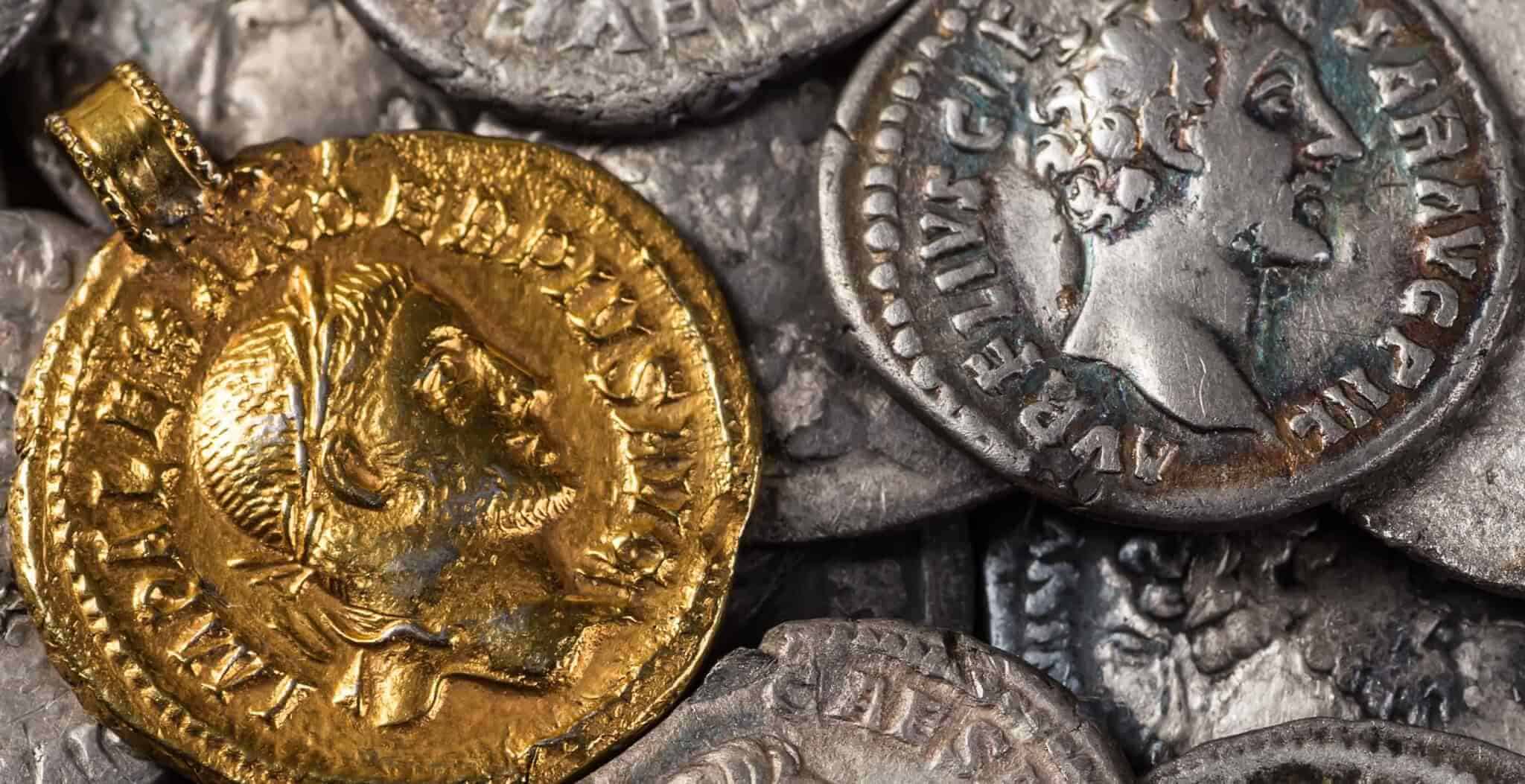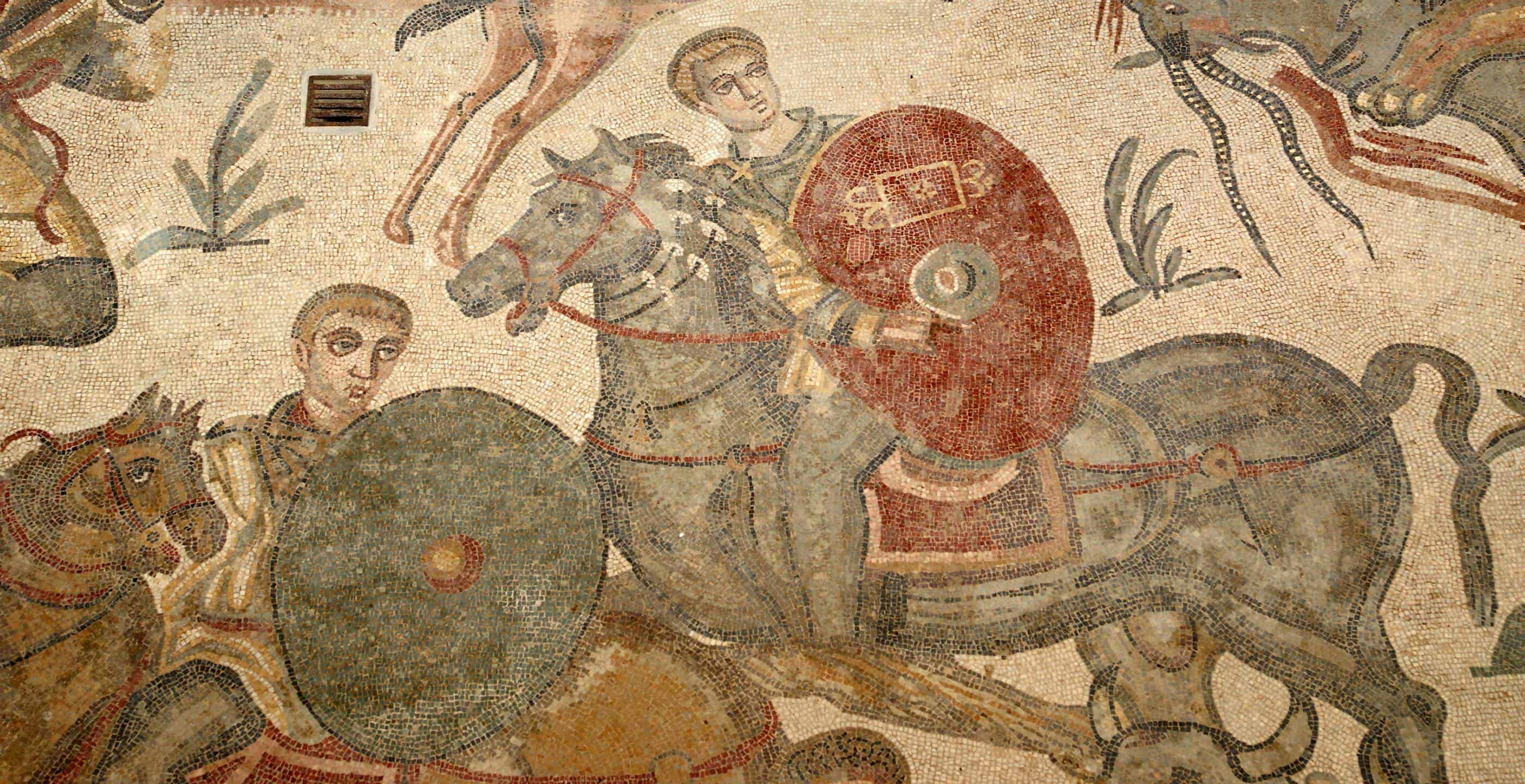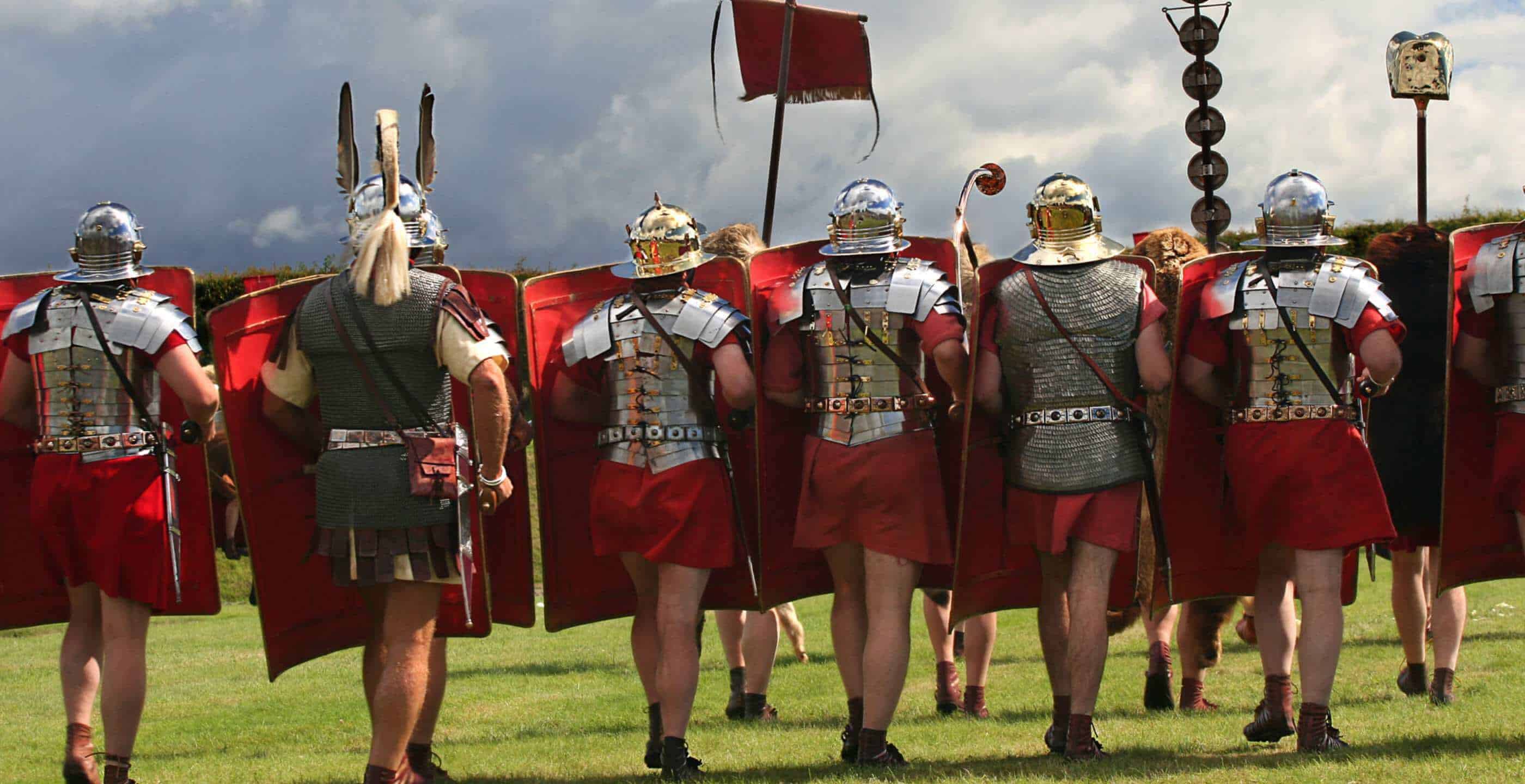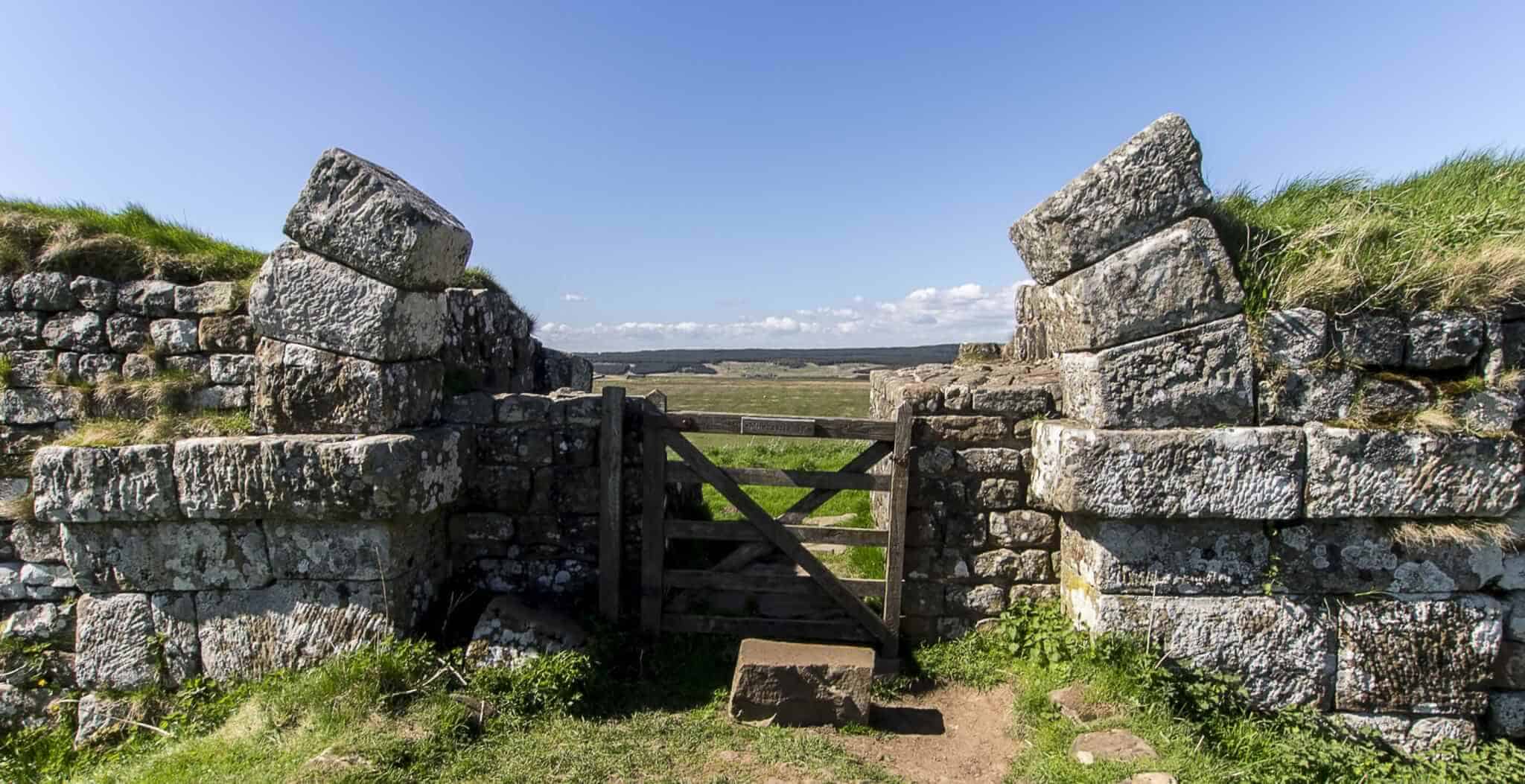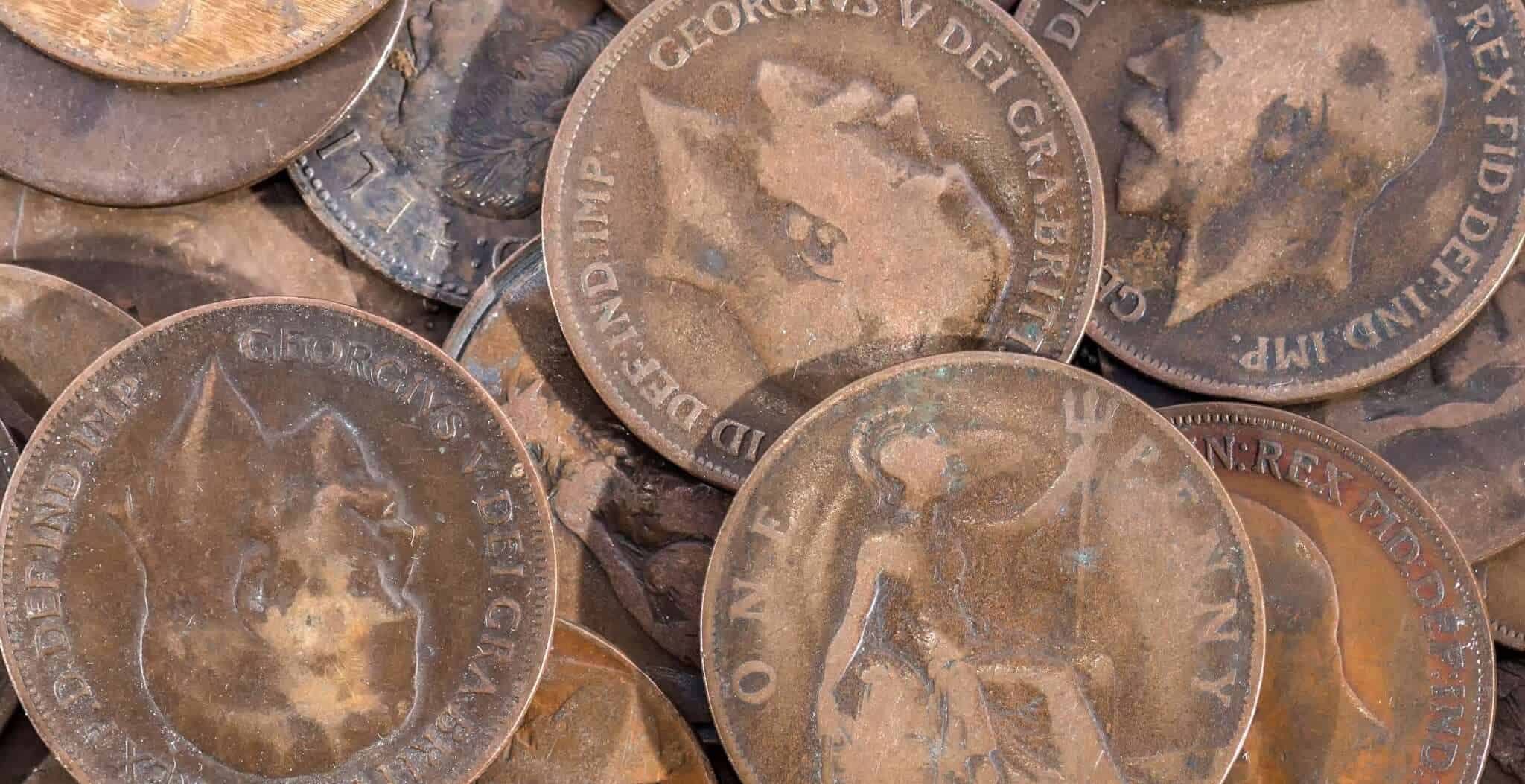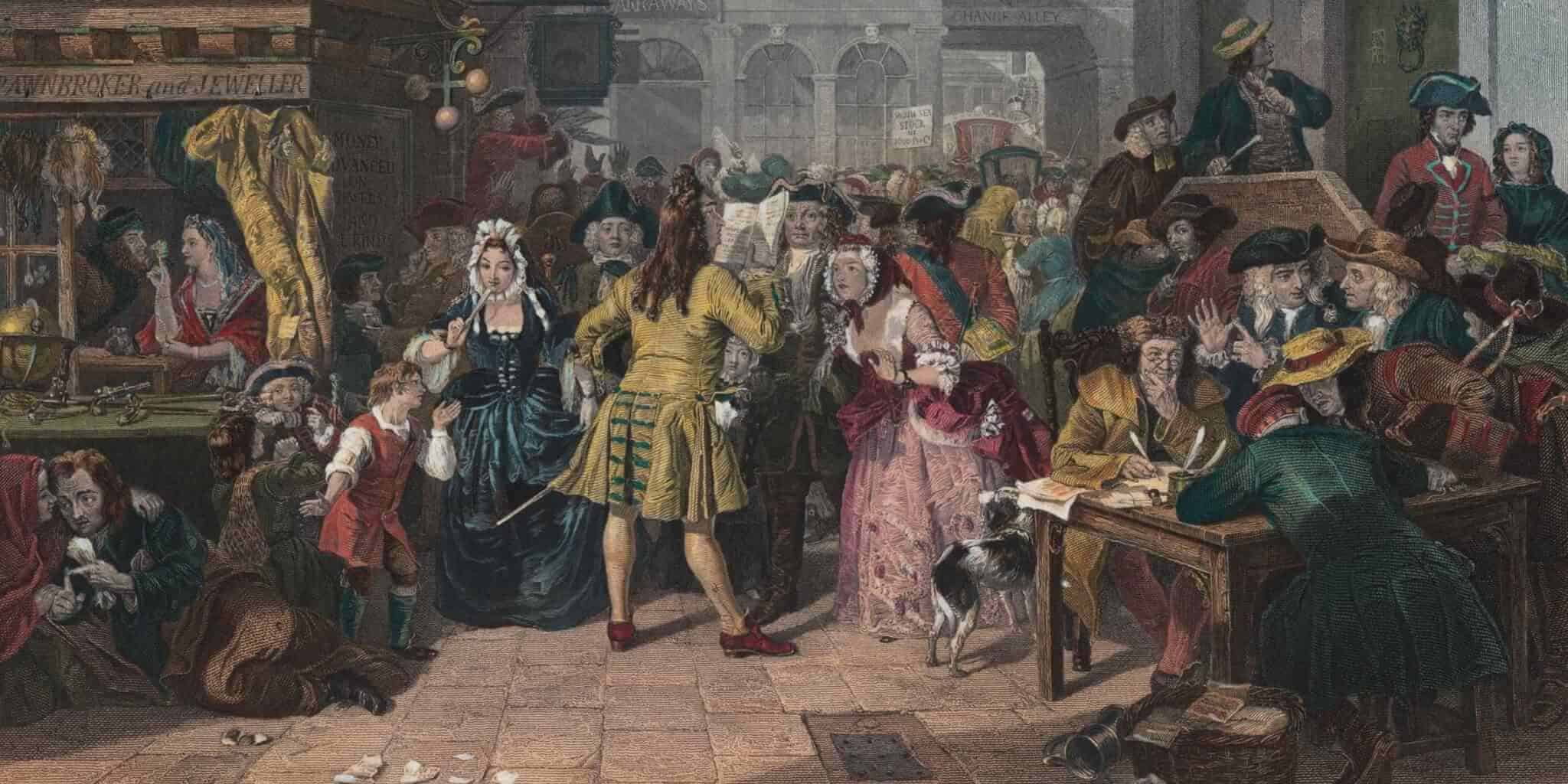The Romans were famous for introducing a uniform currency throughout their empire, meaning that coins that were accepted at Hadrian’s Wall would also have been accepted as far afield as Rome, Carthage and Athens!
Gold and silver coins were issued by the emperor, whilst brass coins would have been issued by the Senate.
The mint at Rome was the main source of currency until the end of the second century A.D., by which time provincial mints were established. The British mints were at London, which began producing coins in A.D. 286, and at Colchester which began minting a year later in A.D. 287.
Even with these two large British mints, many of the coins circulating in Britannia came from other parts of the empire, the most common being from Aquileia, Arles, Lyons, Siscia and Trier.
Roman coinage was divided into three main classes; gold (aureus), silver (denarius) and brass (sestertius, dupondius, and as). At various times, pieces forming multiples or fractions of the standard units were also struck.
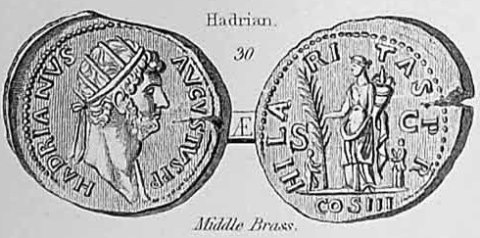
Above: A dupondius (or ‘middle brass’) from the reign of Emperor Hadrian
In the later Roman period, the value of coinage depreciated rapidly. In the 4th century, barbarous imitations of the Imperial coinage were struck and small coins (minim and minimissimi) greatly increased in number.
Below is a quick guide to the relative value of coins in the early stages of the Roman Empire:
2 asses = 1 dupondius
2 dupondii = 1 sestertius
4 sestertic = 1 denarius
25 denarius = 1 aureus.
Published: 14th January 2015.
